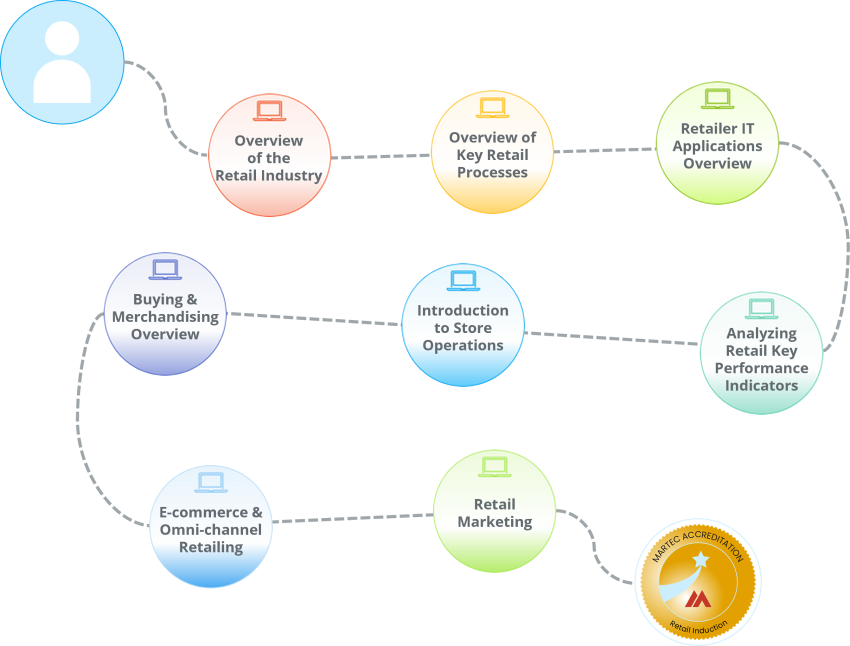Retail Induction Learning Path
Retail Induction Learning Path
This induction learning path is for all new hires in any sales, marketing or project delivery role. The full learning path is recommended for those with no previous retail experience, irrespective of what level they are joining the organization at. If a new hire has some relevant past experience, then some modules can be excluded, depending on what their experience covers. The full learning path takes about 9 hours to study. We recommend not studying for more than 30 to 45 minutes per day.
Each class has a mastery test with a 70% pass mark. Learners who graduate the mastery test will receive a digital badge for each class, providing they have completed the end of class survey and will receive a learning path badge when they graduate the complete path. These badges showcase their achievement and can be added to LinkedIn profiles and other social media.
Select any of the circles along the path to find out more about each step.

The Skills You Gain
By studying this learning path, consultants will gain these skills:
- Identify and articulate key trends in the retail industry.
- List the 6 major retail business formats and describe the differences between each one, including differentiating between year-round or category management formats and seasonal or merchandise management formats.
- Explain the key retail processes in buying, merchandising, store operations, e-commerce, omnichannel retailing and retail marketing.
- Describe a typical retail IT applications architecture, identify the main platform issues to be aware of and the main applications involved.
- Identify and analyze retail key performance indicators to identify the scope for potential improvements.
